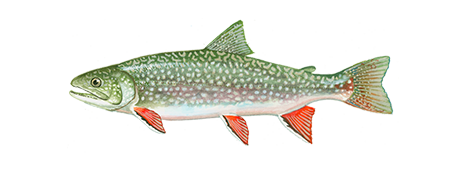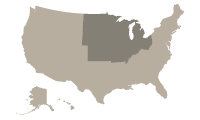
Splake
<p>The splake is a fertile cross between two chars, the lake trout and the brook trout. This hybridization does not occur naturally.</p>

Region
Midwest
Catch ease
Easy
Habitat
Lake, River, Stream
HOW TO IDENTIFY A SPLAKE
The name “splake” is a combination of the words “speckled” from the speckled (or brook) trout and lake trout. The splake is difficult to identify externally because it resembles both parents in different aspects. The body shape is intermediate between the heavier lake trout and the slimmer brook trout. The shape of the tail is also a combination of the brook trout’s square tail and the lake trout’s more lunate tail. The tail of the splake is not as deeply forked as that of the lake trout, and more closely resembles the slightly indented tail of the brook trout. In coloration and makings, the splake more closely resembles the brook trout. It can be positively identified by the number of pyloric caeca, the worm-like appendages on the intestinal tract right after the stomach. The brook trout, which is the smaller parent, has only 23-55 (usually less than 50) pyloric caeca, while the intermediate-sized hybrid has 65-85, and the lake trout, the larger parent, has 93-208 caeca (most often 120-180).
WHERE TO CATCH SPLAKE
The splake has been “planted” in the Great Lakes and other parts of North America, particularly in Ontario, Canada where a program for selective breeding of this hybrid has been underway for some time with considerable success. The following list includes additional details on where to catch this fish:
| Outsides of Bends |
| Rivers and Streams |
| Dams and Falls |
| Eddies |
| Small Pointed Waves |
| Undercuts |
| Overhanging Trees and Bushes |
| Rock and Boulder Pockets |
| Drop-Offs |
| Merging Currents |
| Standing Waves |
| Current Edges |
how to catch Splake
This species is a fairly scrappy fighter and is often targeted using light spinning, baitcasting, and fly tackle. This fish feeds on small fish, insects and fish eggs and can be caught using live bait or artificial bait such as spoons and plugs. The quality of the splake as a food fish is excellent, and due to its initial fast growth rate and game nature it is highly regarded by anglers as well. The following are fishing methods used to catch this fish:
Splake lures, tackle & bait
The following are lures, tackle or bait that can be used to catch this fish:
